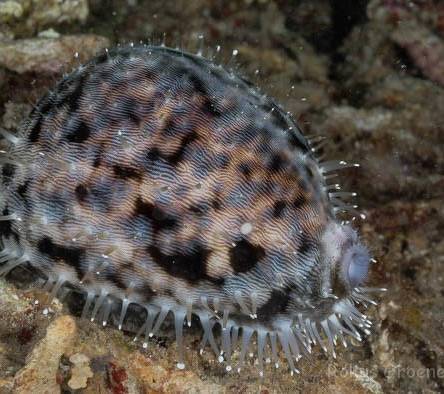Cypraea species are a genus of marine snails also known as cowrie shells. They are popular and recognizable snails due to their shape, distinctive shells, and beautiful patterns. Below is a general description of this genus and information on their care:
Description of Cypraea Species:
-
Appearance: Cypraea snails have distinctive oval-shaped shells with prominent humps on their backs. These shells are smooth and glossy, and their colors can vary, encompassing various shades of brown, red, yellow, and black. It's worth noting that many Cypraea species have beautiful patterns and spots on their shells.
-
Size: The size of Cypraea snails can vary significantly depending on the species. Some species are small, measuring only a few centimeters, while others can grow much larger, exceeding 10 centimeters in length.
-
Behavior: Cypraea snails are typically sedentary and lead a slow-paced life. They are usually found on the seafloor, feeding on organic material such as algae, sponges, and detritus.
Caring for Cypraea Snails in Marine Aquariums:
Caring for Cypraea snails can be challenging because some species are sensitive to changes in water quality and require specific conditions. Here are some tips for their care:
-
Aquarium: Prepare a marine aquarium that mimics their natural habitat. You should provide substrate that is suitable for burrowing, as these snails often hide in sand or on the seafloor. It's also important to ensure appropriate conditions for filtration and water changes.
-
Water Parameters: Maintaining stable water parameters is crucial. The aquarium water should have the correct temperature and salinity, typically between 1.023 and 1.025. Maintaining good water quality is also important.
-
Feeding: Cypraea snails are primarily detritivores, meaning they feed on organic remnants and small organisms found on the seafloor. You can provide them with various sources of detritus in the aquarium, but it's essential to monitor to ensure they have an adequate food supply.
Rearing Cypraea snails in marine aquariums can provide fascinating views due to their beautiful shells and unique patterns. However, it's always essential to ensure you have the right environmental conditions to meet their needs and to monitor water quality and food availability.



